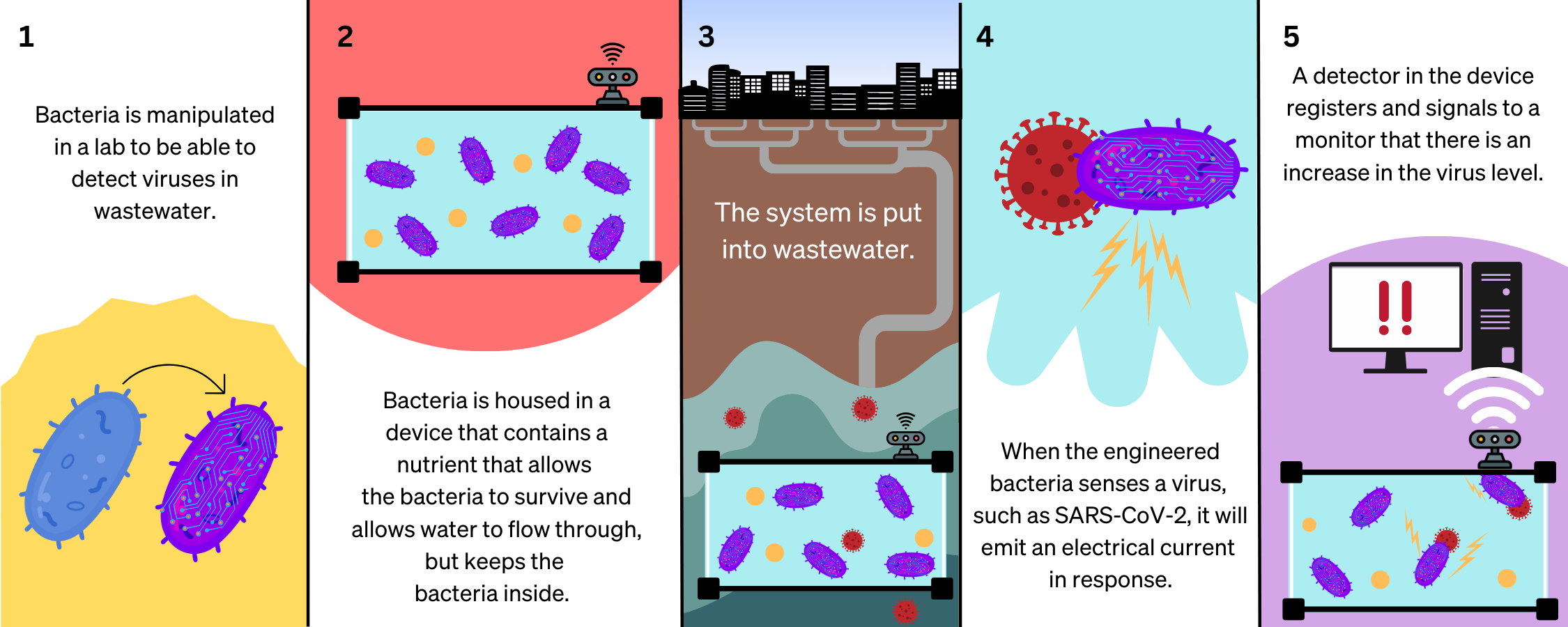Using Engineered Bacteria to Detect Viruses in Wastewater

Table of Contents
Author(s)
Alicia L. Johnson
Civic Science Postdoctoral AssociateKirstin R.W. Matthews
Fellow in Science and Technology PolicyCaroline Snider
Student InternShare this Publication
- Download PDF
- Print This Publication
- Cite This Publication Copy Citation
Alicia L. Johnson, Kirstin R.W. Matthews, Caroline Snider, “Using Engineered Bacteria To Detect Viruses in Wastewater” (Houston: Rice University’s Baker Institute for Public Policy, November 1, 2023).
Download the infographic in the left-hand sidebar.
The COVID-19 pandemic revealed a gap in our ability to track and stop the spread of infectious diseases. During the pandemic, wastewater monitoring helped track COVID-19 infection rates. Now, with funding from the National Science Foundation, a Rice University research team is engineering bacteria to sustainably and continuously monitor wastewater for viruses.
Why look for viruses in wastewater?
Viruses are shed when a person is sick. These viruses can be found in wastewater from sick people using toilets, sinks, and washing machines connected to the municipal water supply. Scientists can test this wastewater and identify viruses when the virus levels are high enough. High virus levels may point to an outbreak. This data can identify communities in need of screening to identify the source of a disease outbreak — before it can infect more people. Early screening can help communities enhance their awareness and preparedness.
What are genetically engineered bacteria, and how are they made?
When the genetic material of bacteria is altered, either by introducing genes from another organism or modifying the bacteria’s existing genes, it is genetically engineered. Genetic engineering can enhance an organism’s capabilities beyond what is normal or add new abilities. When researchers genetically engineer bacteria to detect viruses in wastewater, they engineer the bacteria to emit an electrical current when it senses key components of a virus (for example, a COVID-19 spike protein).
What is this technology being used for, and why?
Engineered bacteria hold a lot of potential for use in biotechnology, medicine, and environmental applications. For the project at Rice University, scientists are manipulating bacteria to sense viruses in wastewater (see picture below).

Funding was provided by grants from the National Science Foundation (#2223678) and Rita Allen Civic Science Fellows. This paper was produced by the Science and Technology Policy Program and the Center for Health and Biosciences Biomedical Research Program at Rice University’s Baker Institute for Public Policy by Alicia Johnson, Ph.D., Kirstin Matthews, Ph.D., and Caroline Snider.
This material may be quoted or reproduced without prior permission, provided appropriate credit is given to the author and Rice University’s Baker Institute for Public Policy. The views expressed herein are those of the individual author(s), and do not necessarily represent the views of Rice University’s Baker Institute for Public Policy.


